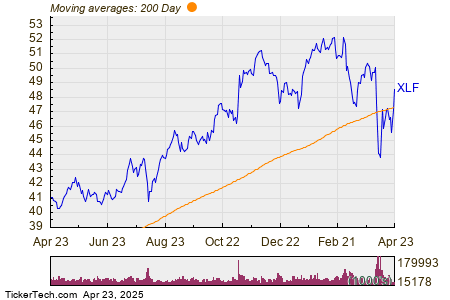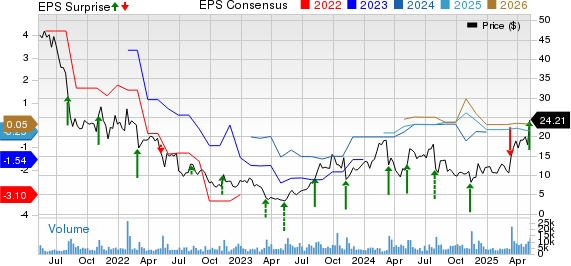Financial Select Sector SPDR Fund Sees $584.8 Million Inflow
Today, we take a closer look at the week-over-week changes in shares outstanding among ETFs, with a notable highlight being the Financial Select Sector SPDR Fund (Symbol: XLF). Recently, the fund experienced an inflow of approximately $584.8 million, resulting in a 1.2% week-over-week increase in outstanding shares, rising from 1,006,195,427 to 1,018,595,427.
Notable Performances Among Top Holdings
In trading today, several of XLF’s key components showed impressive gains. Visa Inc (Symbol: V) increased by about 2.2%, Morgan Stanley (Symbol: MS) saw a rise of approximately 4.6%, and Fiserv Inc (Symbol: FI) was up by around 2.7%. For more details on all holdings within the fund, visit the XLF Holdings page.
Yearly Price Performance Analysis
Examining the chart below, we note XLF’s price performance over the past year relative to its 200-day moving average:

XLF’s 52-week low is $40.17 per share, while the high reached $52.635. The last recorded trade was at $48.59. Using the 200-day moving average as a technical analysis tool can provide further insights into market trends; learn more about the 200-day moving average.
Free report: Top 8%+ Dividends (paid monthly)
Exchange-traded funds (ETFs) function similarly to stocks, with investors buying and selling “units” rather than “shares.” These units can be traded like stocks and can also be created or destroyed based on investor demand. Our weekly monitoring allows tracking of significant inflows (indicating many new units created) or outflows (indicating many old units destroyed). The creation of new units typically requires purchasing the underlying holdings of the ETF, while unit destruction involves selling these holdings. Therefore, substantial flows can significantly influence the individual components held within the ETFs.
![]() Click here to find out which 9 other ETFs had notable inflows »
Click here to find out which 9 other ETFs had notable inflows »
Also see:
- Funds Holding WHLM
- Funds Holding RUM
- Top Ten Hedge Funds Holding RGTI
The views and opinions expressed herein are those of the author and do not necessarily reflect those of Nasdaq, Inc.



